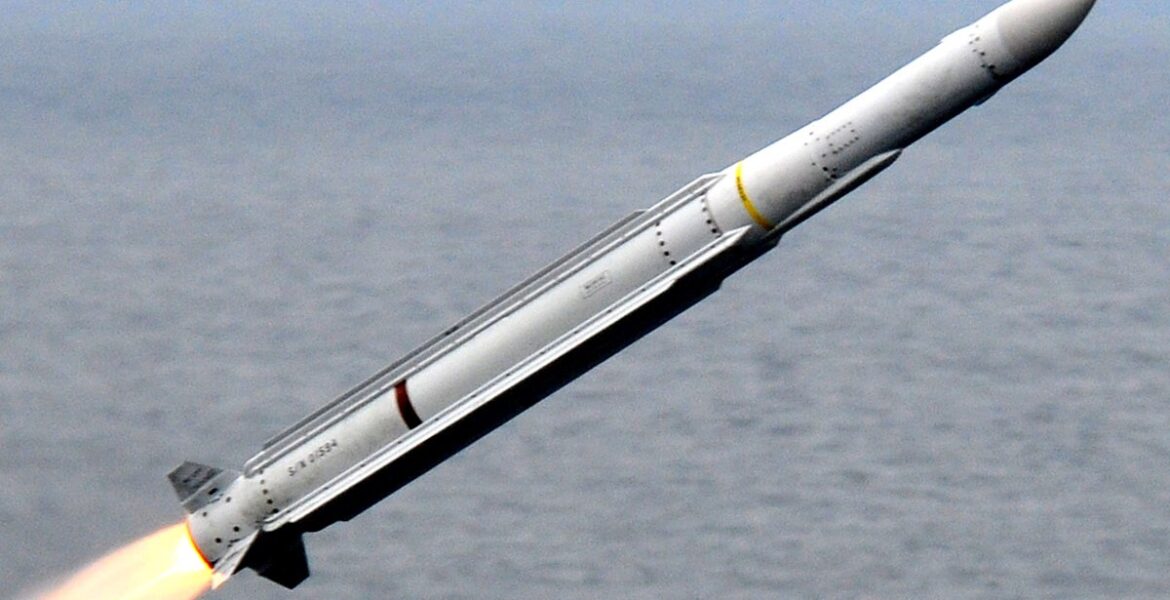Raytheon aerospace and defence industry leaders has just received a $269 million contract modification from US Naval Sea Systems Command to support FY2021-FY2023 Evolved Seasparrow Missile (ESSM) Block 2 full-rate production requirements, announced the US Department of Defence on 14 December, according to Sherpard Media.
Work will be completed by March 2025 at sites in Australia, Canada, Denmark, Germany, Greece, the Netherlands, Norway, Turkey and the US.
The RIM-162 ESSM entered service in 2004 and is fitted with a 39kg blast fragmentation warhead, a mid-course update data link, a Mk 143 Mod 0 solid fuel rocket motor, and a semi-active radar homing system or a dual semi-active/active radar homing system.
RESOURCE | ABOUT THE ESSM
The RIM-162 Evolved SeaSparrow Missile (ESSM) is a development of the RIM-7 Sea Sparrow missile used to protect ships from attacking missiles and aircraft. ESSM is designed to counter supersonic maneuvering anti-ship missiles. ESSM also has the ability to be "quad-packed" in the Mark 41 Vertical Launch System, allowing up to four ESSMs to be carried in a single cell.
DESIGN
The original Sea Sparrow was an expedient design intended to provide short-range defensive fire in a system that could be deployed as rapidly as possible. The AIM-7 Sparrow was the simplest solution as its radar guidance allowed it to be fired head-on at targets and this guidance was easily provided by mounting an aircraft radar on a trainable platform. In the years after its introduction, it was upgraded to follow improvements being made in the air-to-air Sparrow models used by the US Navy and US Air Force. The ultimate version in this line of weapons was the R model, which introduced a new dual-seeker homing system and many other upgrades. After that point, the AIM-120 AMRAAM offered higher performance from a missile that was smaller and lighter, and development of the Sparrow ended in the 1990s.
This left only the Sea Sparrow using the basic platform, and it no longer had to fit on aircraft. So instead of simply using the P and R models as they were, it was decided to dramatically upgrade the weapon as the Evolved Sea Sparrow. The ESSM emerged as a completely new weapon, common only in name with the original, although using all of the same support equipment allowing it to be fit to ships already mounting the older models. Compared to the Sea Sparrow, ESSM has a larger, more powerful rocket motor for increased range and agility, as well as upgraded aerodynamics using strakes and skid-to-turn. In addition, ESSM takes advantage of the latest missile guidance technology, with different versions for Aegis/AN/SPY-1, Sewaco/Active Phased Array Radar (APAR), and traditional target illumination all-the-way.
In the 2000s the NATO Seasparrow Project Office began planning an upgraded Block 2 version of the ESSM. In 2014 Canada pledged 200M CAD to underwrite their share of the Block 2's development cost.
ESSM Block 2 leverages the existing Block 1 rocket motor and features a dual-mode X band seeker, increased maneuverability, and other enhancements. Block 2 features enhanced communications systems that allow for mid-course guidance correction, which makes the missiles easy to network into the Navy's emerging Cooperative Engagement Capability.[9] Unlike Block 1, Block 2's active radar homing seeker will support terminal engagement without the launch ship's target illumination radars. The upgraded blast-fragmentation warhead was designed, developed and is being produced by Roketsan. The improved ESSM Block II will be fielded by the US Navy from 2020.


